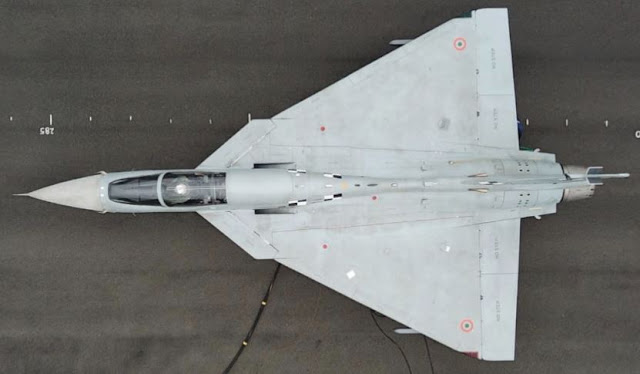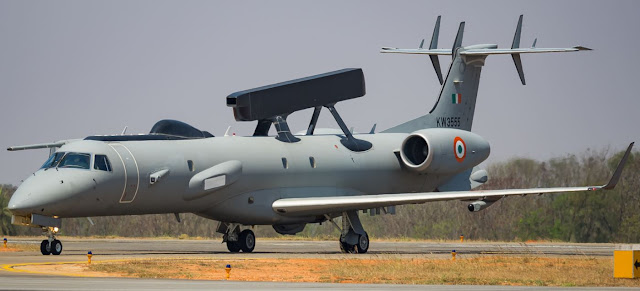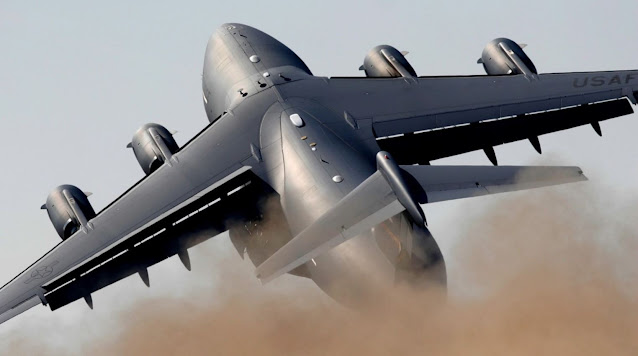India's Military Deficit - Part 2 (Air Force)
In the previous article, the strength of Indian Army has been discussed. Let us analyze the Indian Air Force strength in this article in 2020:
1. Fighter aircraft: A fighter aircraft covers around 2,400 km in 2 hours of flight time. With a patrol mission involving 3 aircraft covering our total boundary, the required number for 24 hours of protection is 333. By providing redundancy of 40% availability due to maintenance, this number rises to 832. We have about 575 fighter aircraft involving Rafale, Mirage 2000, MiG 29, Sukhoi-30 MKI, Jaguar, MiG 21 and LCA Tejas Mk 1. So, the ratio between required vs available is : 832 vs 576 i.e. 1. So we have slightly less fighters and need to increase the number of our fighter pilots, as our enemy fighter strength increases. Also most of the fleet needs to be upgraded within the next 10-15 years. So, there is a need to involve private players to help HAL scale up production of LCA Tejas and other fighter jets like MWF, Tejas Mk 2 and S.P.O.R.T.
2. AWACS: Considering the attack from four directions (N-E-W-S), we require 2 AWACS for each. Also the usual flying time is 6 hours daily for an AWACS. The total number of AWACS required come to be 32 for the air force. But only 5 AWACs are available for Air Force. So the ratio between required vs available is : 32 vs 5 i.e. 6. This is a critical requirement, as they are force multipliers and work as command and control center in any conflict or war.
3. Reconnaissance: Assuming 25% of our land boundary needs to have reconnaissance missions and each recon aircraft has speed of 800 km/h. This gives us requirement of 28 aircraft if each can be used for 6 hours per day. The available strength is a meager 4. So the ratio between required vs available is : 28 vs 4 i.e. 7. This is another critical requirement as they are force multipliers in a war situation.
4. Electronic warfare: Any attack mission needs electronic warfare aircraft to evade/neutralize enemy radar. These can be made effective using specialized aircraft like FA-18G Growler. Assuming a mission requires 9 normal fighters and at least one EW fighter, we have a need for 74 such aircraft. At present, we have only 3 Gulfstream III aircraft. So the ratio between required vs available is : 74 vs 3 i.e. 25. This is another critical requirement that we need to look into urgently.
5. Tanker: Assuming each air tanker can fuel 10 aircraft like fighters, AWACS, recon and transport, we get the required number to be 100. While we have only 6 air tankers available. So the ratio between required vs available is : 100 vs 6 i.e. 17. This is another critical requirement for Indian AirForce.
6. Air Bases: Though we have large number of air bases at 88, but the runways need to be upgraded. Their length needs to be increased and all weather, day-night landing should be provided. The fighter jets need to be stored in hardened shelters.
7. Air Defense: Each air base and critical defense industry target needs to be protected by SAM missile systems like Akash 1 S. Since 88 air bases and Advanced Landing Grounds are available. So total 440 Akash batteries are required which have 12 missiles each. At present, Air Force has only 150 batteries. So the ratio between required vs available is : 440 vs 150 i.e. 3. If we consider protecting high value civil targets inside India then this deficit becomes bigger.
8. Transport: This has been already covered under last article for army. We need about 700 big and medium transport planes. But only 100 are available today. Most of these are old and tired planes. Recently acquired, C-17 is the highlight, but we have only 11 of them. Besides Boeing has stopped manufacturing them.
A recent purchase of Airbus C-295 needs to be delivered quickly. It would be better if we have around 50 Airbus Atlas A-400 M aircraft. If they can be made in India for the next 10-15 years as a long term contract, then this critical logistics need can be fulfilled.
9. Attack Helicopters: The attack helicopters can be used to patrol over both maritime and land boundaries. This will free up infantry, BSF, ITBP and other security forces and provide them much needed cover in case of any sporadic hostile action by enemy. An attack helicopter like LCH can cover around 250 km and 2 of them are likely to be part of escort or patrol mission. The total boundary of 15,200 + 7000, which needs approximately 3200 attack helicopters. But our present strength of attack helicopters is only 173. So how is the ratio between required vs available: 2,131 vs 173 i.e. 12.
10. Transport helicopters: The small and medium helicopters can provide last mile connectivity, and assuming only 10% of transport aircraft capacity needs to be available for helicopters. Also a helicopter can carry only 5% of payload of a big aircraft. The number of required utility helicopters is 1,426. Our present strength of Mi-17, HAL-Dhruv, Chetak and Cheetah is only 185. These are mostly small helicopters. So the ratio between required and available is 1426 vs 92 i.e. 16.
Factors behind this deficit in Indian Air Force:
- A remarkable ability to change its mind even after giving FOC to Indian jets.
- Inducting equipment in small amount like 2 AWACs, 11 transport planes, instead of the need for hundreds of fighters, helicopters and force multipliers like tankers, transport planes and AWACS.
- A very low emphasis on force-multipliers.
- Long time to evaluate any new design, development or acquisition e.g. 10 years for LCH. The recent case of inducting only 2 LCH helicopters, that too in ad-hoc deployment, is the point in case.
- Very slow progress of development of indigenous Kaveri engines.
- A very long and opaque acquisition process for foreign imports.
- No active role in creating synergy between Indian PSUs and Indian private players to scale up production.
In the next article, we shall discuss the strength of Indian Navy.











Comments
Post a Comment